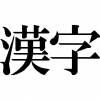Verb conjugation(動詞の活用)
I think one of difficult part in Japanese is verb conjugation(動詞の活用).
Conjugation is difficult word but we can say simply that “conjugation is to change form of verb”. In other language also, there are form change of verb depending on sentence form (negative, past, future sentence etc.)
There are many explanations on this topic but I try to explain more simply with some examples.
Root(語幹) and ending(語尾)
Verb consists of root and ending. Root is basic part of verb and never change its part.
On the other hand, ending is changed depending on sentence form.
First step to master verb conjugation is to recognize what is root and ending for each verb.
Example for root and ending
・食べる (to eat) たべ is root and るis ending
・見る(to see) み is root and るis ending
・話す (to speak) はな is root and すis ending
To recognize what is root of verb, which related with topic bellow, just make negative form by adding “ない” to verb . Then unchanged part in verb is root.
For example,
・食べ-ない is negative form of 食べ-る. 食べ is unchanged part in 食べる so たべ is root
・見-ない is negative form of 見-る. 見 is unchanged part in 見る so 見 is root
・話-さない is negative form of 話-す. 話 is unchanged part in 話す so はな is root
Can you understand what is root and ending?
Also, can you understand how to recognize root of each verb?
These are very important to next steps.
Category of verb
There are some categories of verb. Some says 4 groups but some says 5 groups..
Either ok I think.
Anyway,
Some explanations categorize Ru-verb and U-verb but in this post, I categorize into 3 groups and irregular verbs, total 5 groups.
Five-step verb (五段活用 or ア段活用. Often called group 1)
Upper one-step verb (上一段活用 or イ段活用. Often called group 2)
Lower one-step verb (下一段活用 or エ段活用. Often called group 2)
“来る” form
“する or ~する” form
To recognize which each verb is categorize, we will check root as I explain above.
Please remember above example with negative form by adding ない.
・たべ-ない is negative form of たべ-る. たべ is unchanged part in たべる so たべ is root
・み-ない is negative form of み-る. み is unchanged part in みる so み is root
・はな-さない is negative form of はな-す. はな is unchanged part in はなす so はな is root
Please check sound before -ない.
In たべ-ない case, you can find べ(be) before -ない and べ(be) is e so it’s categorized into Lower one-step verb (下一段活用 or エ段活用).
In み-ない case, you can find み(mi) before -ない and み(mi) is i so it’s categorized into Upper one-step verb (上一段活用 or イ段活用).
In はな-さない case, you can find な(na) before -ない and な(na) is a so it’s categorized into Five-step verb (五段活用 or ア段活用)
Chart of conjugations by category
Here is chart of conjugation by category.
| Form | Form in JP | Explanation | Five-step verb | Upper one-step verb | Lower one-step verb | “来る” form | “する or ~する” form |
| Verb as example | 話す | 見る | 食べる | 来る | する | ||
| Root or stem | 語幹 | はな | み | たべ | きorく | すorし | |
| ①Negative From | 未然形 | In negative sentence | はな-さない -sanai | み-ない i-nai | たべ-ない e-nai | こない or | しない or |
| – | – | – | きません | しません | |||
| ②Conjunctive Form | 連用形 | Followed by -ます(masu) | はな-します -shimasu | み-ます i-masu | たべ-ます e-masu | き-ます | し-ます |
| ③Dictionary Form | 終止形 | At end of sentence in present tense | はな-す -su | み-る i-ru | たべ-る e-ru | くる | する |
| ④Attributive form | 連体形 | Followed by noun | はな-す -su | み-る i-ru | たべ-る e-ru | くる | する |
| ⑤Conditionals | 仮定形 | Followed by -ば(ba) | はな-せば-seba | み-れば i-re | たべ-れば e-re | くれば | すれば |
| ⑥Command Form | 命令形 | Order form | はな-せ -se | み-ろ i-ro | たべ-ろ e-ro | こい | しろ |
| Note | vowels soon after root in forms: a i u u e e | pattern from top: i i i-ru i-ru i-re i-ro |
pattern from top: e e e-ru e-ru e-re e-ro |
||||
Example in sentence
In the end, example in sentences for 6 forms
・食べるcase
①トマトを食べない
②トマトを食べます
③トマトを食べる
④トマトを食べることがきらいだ
⑤トマトを食べれば、元気になる
⑥トマトを食べろ
・見るcase
①テレビを見ない
②テレビを見ます
③テレビを見る
④テレビを見るのが趣味だ
⑤テレビをたくさん見れば、目が悪くなる
⑥テレビを見ろ
・話すcase
①日本語を話さない
②日本語を話します
③日本語を話す
④日本語を話す外国人
⑤日本語を話せば、友達ができる
⑥日本語を話せ
・来るcase
①友達が来ません
②友達が来ます
③友達が来る
④友達が来る時間は10時です
⑤友達が来れば、食事に一緒に行く
⑥友達よ来い
・するcase
①たくさん勉強しない
②たくさん勉強します
③たくさん勉強する
④たくさん勉強する生徒を応援する
⑤たくさん勉強すれば、理解できるようになる
⑥たくさん勉強しろ
How was this post?
At first, it may take some time to understand and memorize but if you keep using verb you will get to know soon!
If you like this or feel this is useful, please share on Facebook and retweet on Twitter!
If you wanna join Leo Sensei’s group on Facebook, click Facebook mark on top or bottom and send friend request to me. You can get updated information and ask me freely about Japanese language and culture and so on.


















